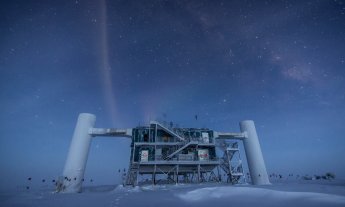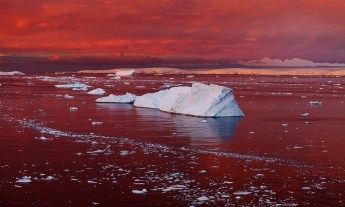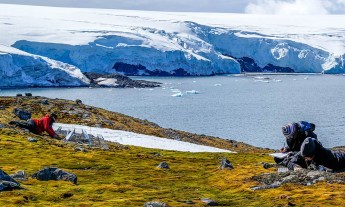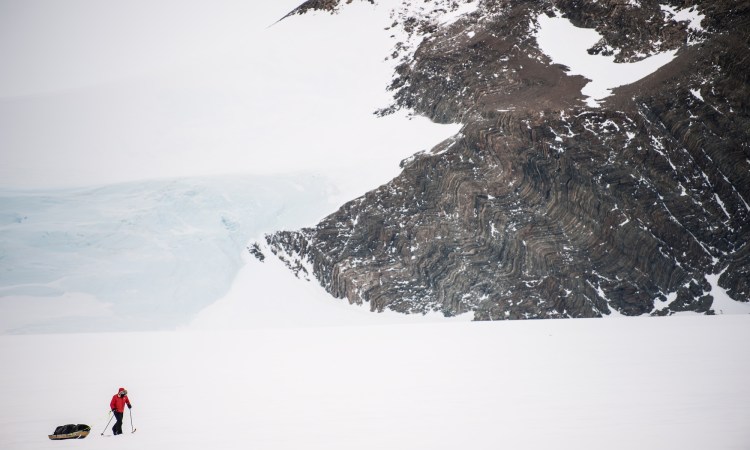
In attempting the first solo crossing of Antarctica, Ben Saunders battled white-out landscapes, shifting snows and mind-altering monotony — all while pulling hundreds of pounds of supplies. Here’s what he discovered on his incredible journey.
In 2004, 27-year-old polar explorer Ben Saunders (TED Talk: To the South Pole and back, the hardest 105 days of my life) became the youngest person to ski to the North Pole. Nine years later, he was part of a two-person team that journeyed 1,800 miles to and from the South Pole by foot, completing the same trek that killed Robert F. Scott and his four companions a century before.
Then, in 2017, Saunders set out to attempt the first solo, unsupported, unassisted crossing of Antarctica. He planned to take roughly the same route that his friend Henry Worsley traveled in 2016. Worsley was 30 miles from journey’s end when he fell sick and was flown to a hospital, where he died of peritonitis. Not only did Saunders want to complete the trip to honor Worsley but he’d also use it to support The Endeavour Fund, a nonprofit that assists wounded and vulnerable servicemembers.
On November 8, 2017, a plane dropped Saunders — who was 40 at the time — at Berkner Island, just off the coast of the Weddell Sea (to see a map, click here). Like Ernest Shackleton (although Shackleton was ultimately unsuccessful), Saunders was aiming to continue beyond the South Pole to a point on the far side of Antarctica. For the next seven weeks, his only connections to the outside world were a satellite phone (only for emergencies), a tracker to keep a remote team aware of his position on an hourly basis, and a smartphone he used to write emails and blog posts. He skied an average of 15.5 miles during 9- to 10-hour days while pulling a sledge that held all the food and equipment he’d need for the journey and weighed 300 pounds at the trip’s start.
After skiing 660 miles, Saunders reached the South Pole on December 29. There, 30 miles from his destination, he opted to stop, for reasons he explains below. Still, Saunders stands as one of only two (or possibly three) people who’ve traveled solo to both poles on foot. Here, he shares what he learned on his expedition.
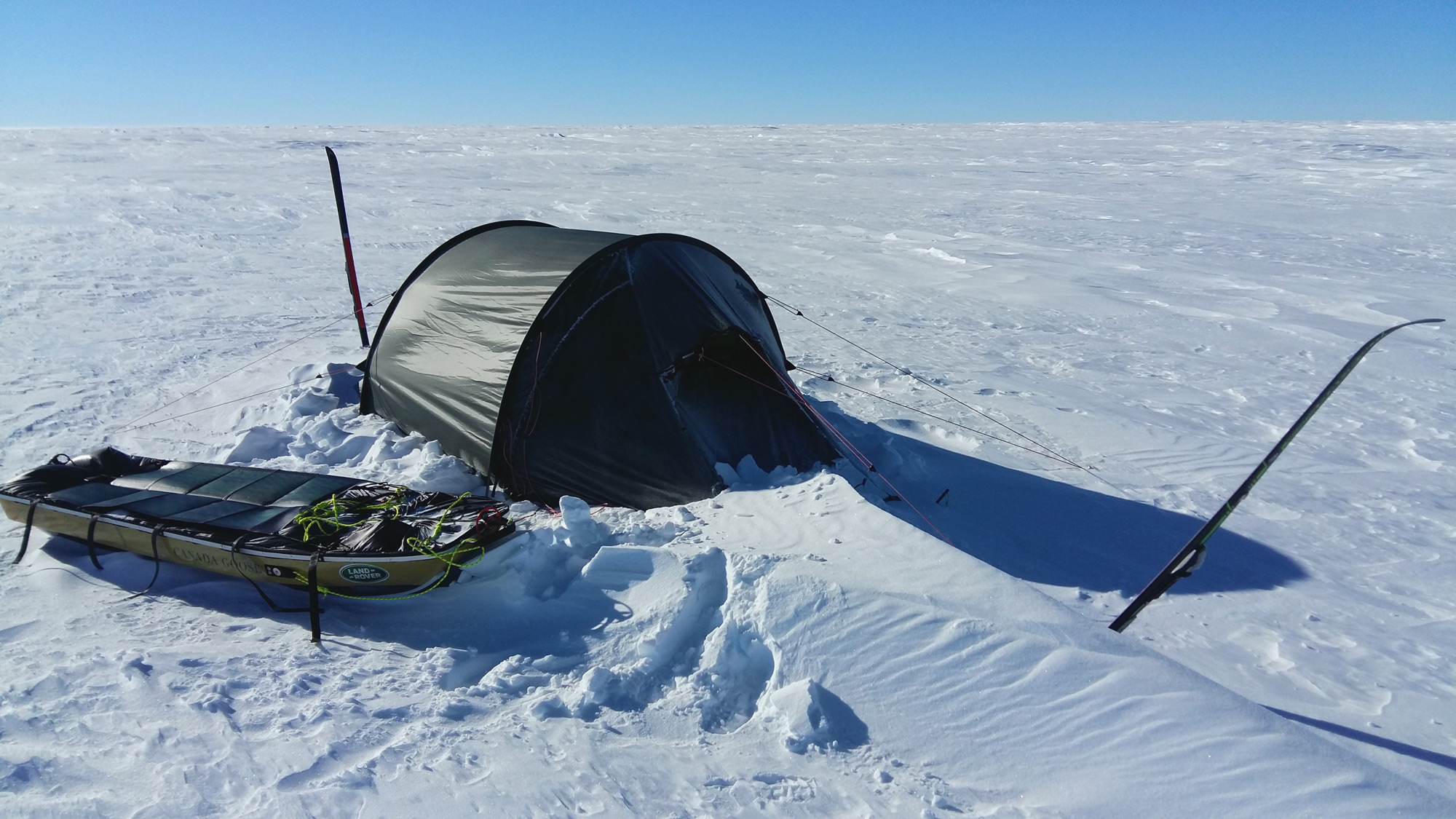
Lesson #1: Training for this trip was like prepping for an ultramarathon and a weight-lifting competition … while being overweight.
“I went through about 10 months to a year of specific training beforehand. It’s a strange thing to train for a polar expedition — in some ways it’s an ultra-endurance event, and in other ways it’s almost a strongman event since you’re dragging 300 pounds of gear at the start. You also have to get fat so you have enough stored energy. So, you’re trying to build these three completely contradictory things.”
Lesson #2: Training is also about banking memories for challenging times.
“Looking back not just on the months I spent preparing for this expedition but on my 15 years of training for these sorts of trips has given me mental reference points to fall back on. When things are tough, I think ‘Oh well, I did that session in the gym’ or ‘I remember doing that bike ride or that ultramarathon.’ The training is really useful preparation.”
Lesson #3: Traveling solo may sound peaceful … but you’ve never been this alone. Or this busy.
“Part of me was hoping this trip might be like the ultimate silent retreat, that I’d be alone with my thoughts for nearly two months and come back with incredible new insights. The fact is, when you’re solo, you’re busy the whole time. You’re navigating, you’re timekeeping, and you’re making sure you eat regularly. You’re constantly looking at the terrain and the weather conditions. There are all these variables to juggle. It was hard to be present and mindful and to think deeply, because there was just always so much to do.”
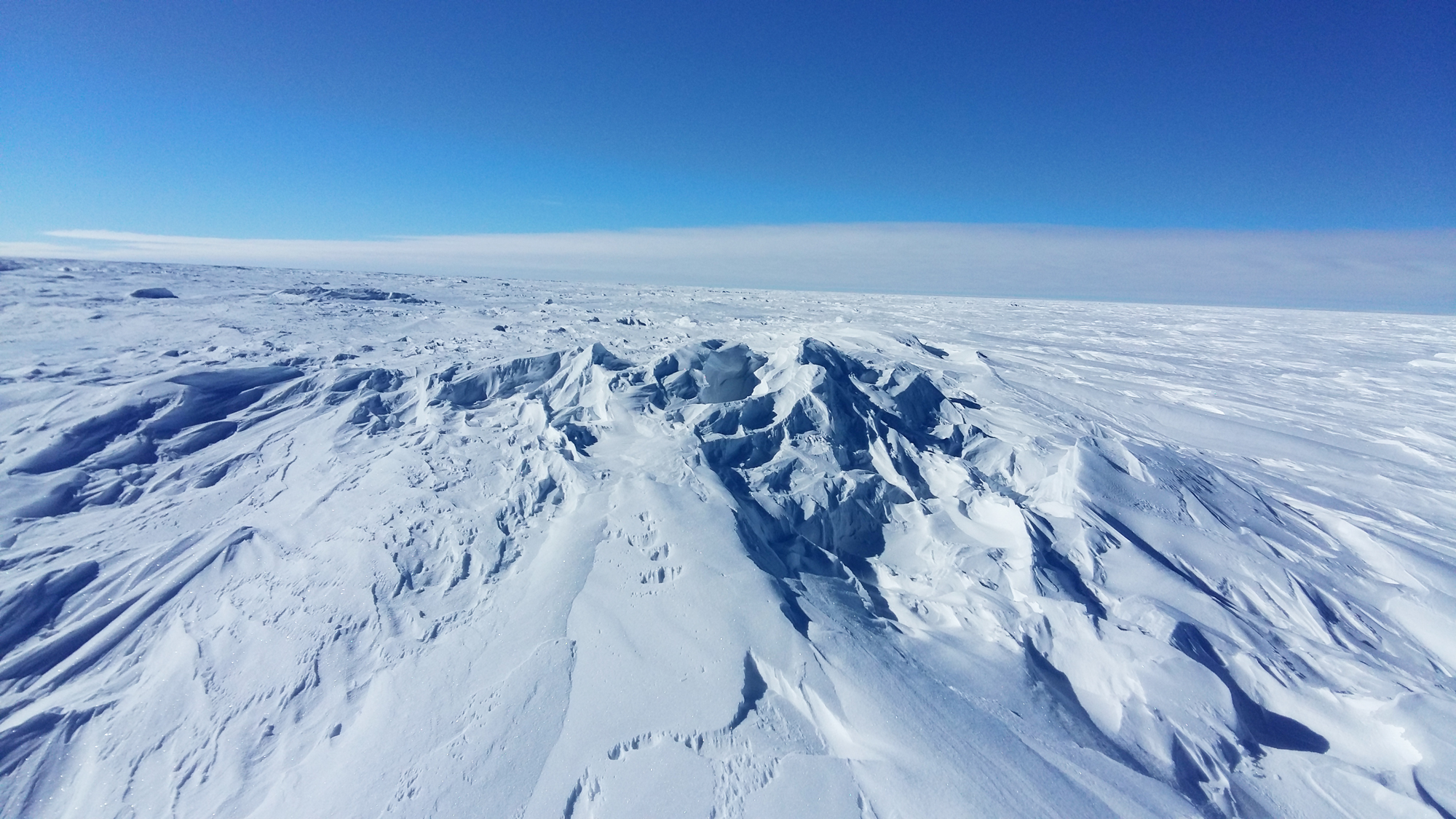
Lesson #4: Skiing into the white nothingness is a head trip like no other.
“About 25 percent of the time on my trip, there was zero visibility, or close to it, because of snowfall, low clouds, fog or blowing snow. Normally, during the day, I’d navigate using my compass and I’d pick some feature towards or on the horizon — a mound or peak or something that looked unusual — and speed towards it. When I got there, I’d pick the next feature. That way, I had this sense of covering ground and making progress. In a whiteout, all you can do is look down at your compass and try to keep traveling in vaguely the same direction. There are no landmarks. You lose sight of everything. Sometimes, I got this peculiar feeling almost like vertigo — because you can’t see the ground or the sky. At one point, it was like someone had spray-painted the inside of my goggles white; it felt like I couldn’t see a thing. Occasionally, I also felt like I wasn’t really sure what I was treading on. I’d think the ground was flat, and suddenly there’d be a little dip and my foot would disappear into a trough. It was disorienting in every way.”
Lesson #5: Adventure travel can be surprisingly monotonous.
“In Antarctica, there’s 24-hour daylight, so there was no natural delineation between day and night. Every single day looks the same, and I had around five weeks of that. It was very hard. There were certain parts of the journey that were very memorable because there was lots going on — early on, I was traveling through mountains — but there were also days and days where nothing happened. I’d get up in the morning, go outside, take my tent down, travel for 10 hours south, and see nothing at all. I’d see the same thing I’d seen the day before: just snow.”
Lesson #6: Even simple things get complicated.
“One of the most frustrating facts of life in Antarctica was the inevitable faff with clothing and gear. Every time I stopped to eat and drink, I had to take off my sunglasses or goggles and stow them somewhere, take off my face mask and stow that somewhere, take off my compass harness, and take off my rucksack — all before I sat down. I’d eat, drink, and then I’d reverse the whole procedure before I got going again. Because I was eating every 90 minutes, if not sooner, I did this six or more times a day.”
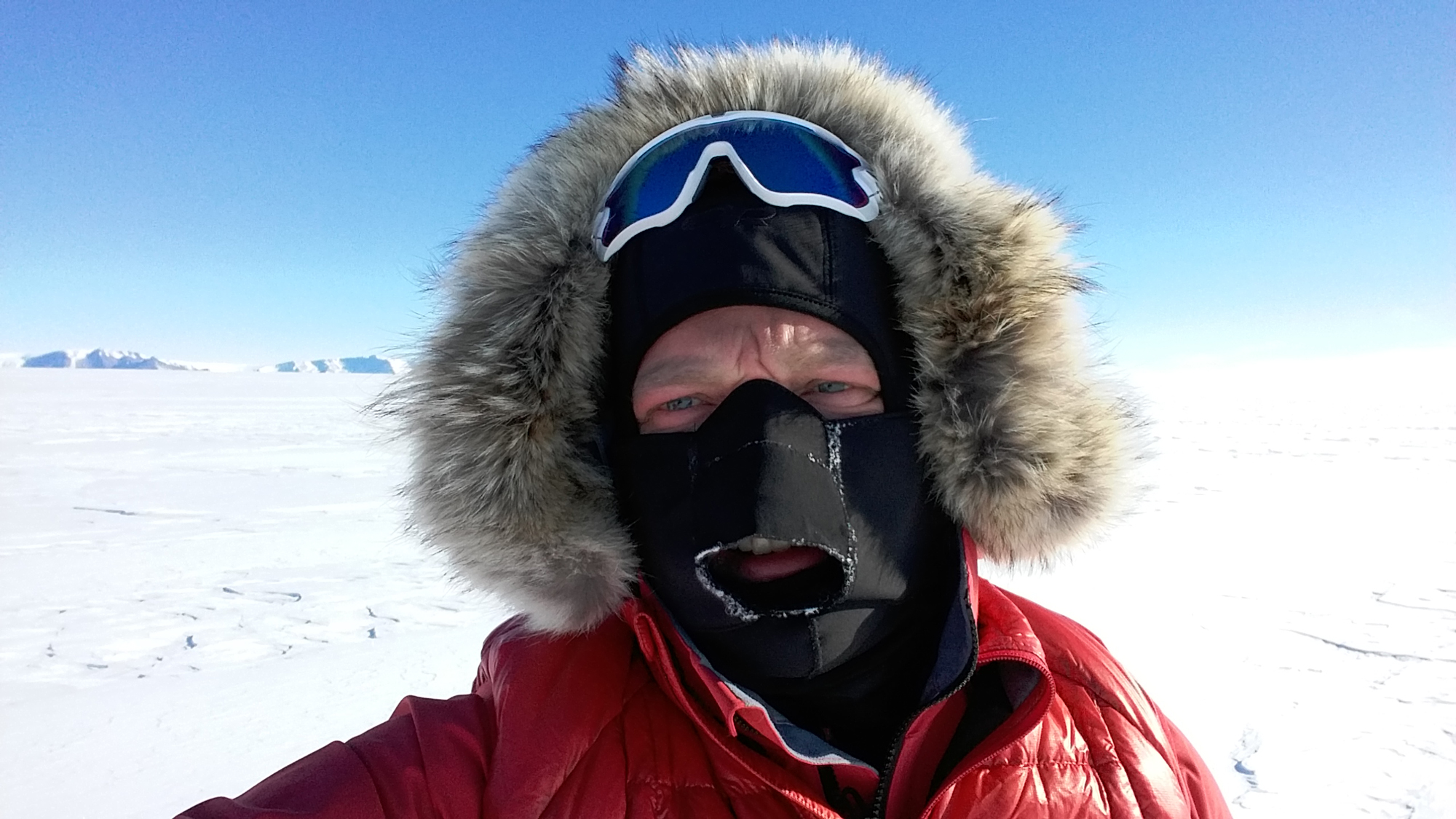
Lesson #7: I realized I couldn’t worry about everything.
“Antarctica is a place that’s massive — it’s the size of the US and Mexico put together — and it’s very humbling. You feel very small when you’re out there traveling on foot, sleeping in a tent, melting snow to get your drinking water. You feel very much at the mercy of elements at their most powerful, and there are so many factors that are completely outside your control. I had to learn to shepherd my own energy and make sure I wasn’t wasting it by getting frustrated by the weather, snow conditions, or things I could never change. Instead, I tried to focus my energy on the things that I could do, which were look after myself, carry on moving south, and make sure I was eating and sleeping and trying to recover to the best of my ability.”
Lesson #8: Fear happens; the key is staying calm.
“There was always a feeling when the wind picked up and the weather got worse that potential disaster wasn’t far away. When I’d be trying to put a tent up in the strong winds, I knew if I let go of the tent and it blew away, I would have lost my home, my shelter. Even if I called for an aircraft, it might take a day or two before they’d reach me. There were days when I had moments of fear, and to deal with that, I had to fall back on experience. Invariably, I’d realize I’d seen it before — I’d crossed many crevasses, I’d been through many storms — so deep down I had this belief that it would be all right.”
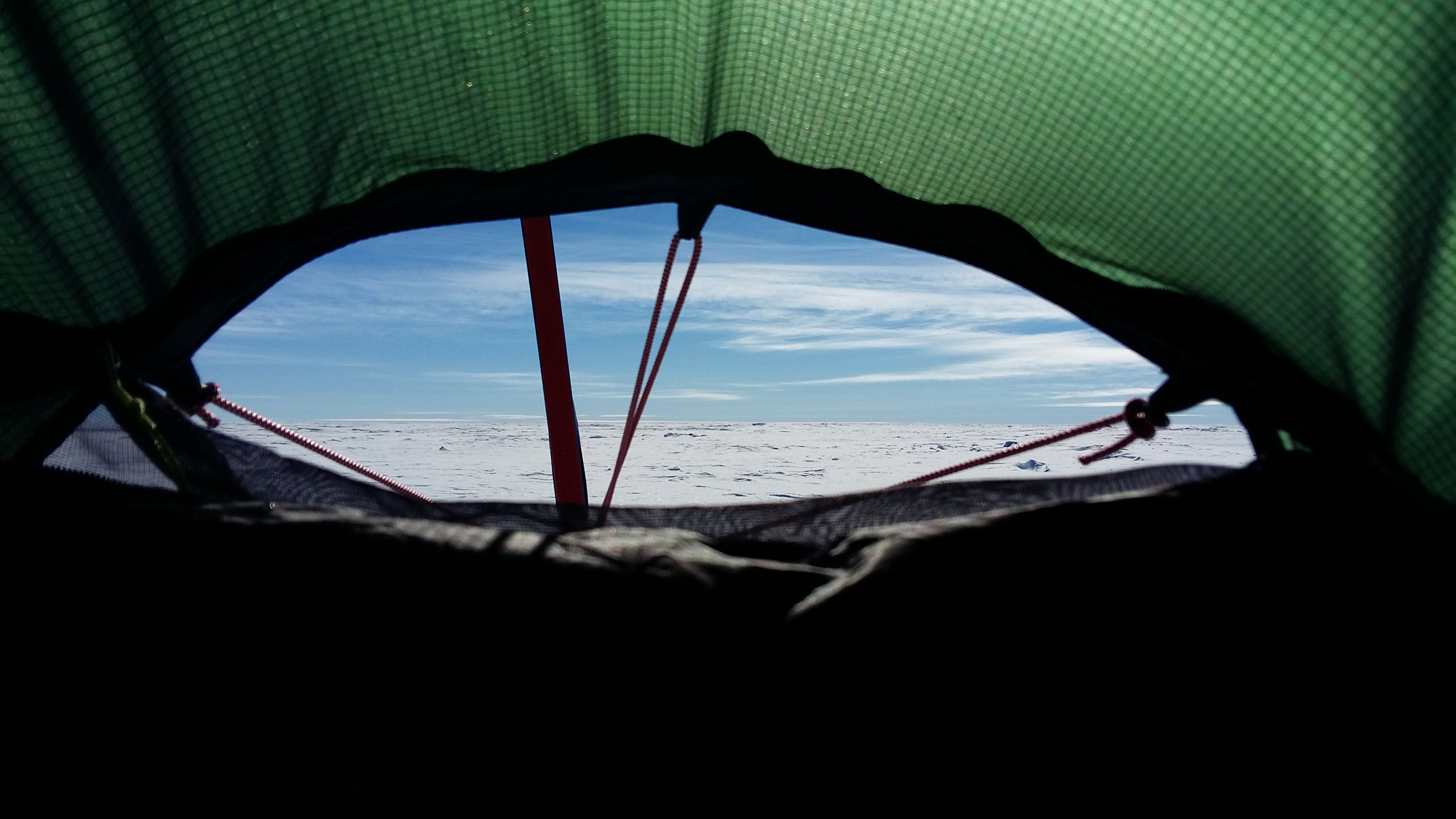
Lesson #9: I had to remind myself to stop and notice the magic.
“One of the potential downsides of having done so many expeditions is that it almost becomes quite routine; it becomes what I do. It was surprising how quickly it felt like second nature — traveling on skis again, pulling a sledge. Because I’ve done it for many months in the polar regions, it felt very natural. The flip side of it is occasionally, I lost sight of the sheer miracle of being down there on my own, the magic of it, and the joy of doing what I dreamt of doing when I was a kid.”
Lesson #10: I experienced the nameless joy of settling snow.
“I’ve no idea if there’s an actual term for the phenomenon, but I had some of the best whumphs of my life on this trip. I assume it’s something to do with the weight of the snow settling, but it’s this sensation of the area of snow you’re standing on suddenly dropping by an inch or two, accompanied by a sound like a muffled thunderclap. If you’re lucky — as I have been — this sets off a chain reaction whumph, with a shockwave rolling out towards the horizon in every direction. It’s petrifying the first time you experience a whumph but once you realise they’re harmless, it’s extraordinarily satisfying — like being a snowfield chiropractor, clicking tons of snow back into the right place.
Lesson #11: Ultimately, I had to put my health first.
“In some ways, stopping my expedition was purely a result of the calculation I’d made of the number of days of food left, the miles I had left to go, and my average speed so far. What was hard about the decision was that I wasn’t struggling. I was in good condition and good health, but I was six or seven days behind the schedule I’d set for myself. Perhaps if I pushed myself to complete exhaustion every single day for two weeks and had perfect weather, then, yes, in theory it would have been doable. But I found I didn’t have the appetite for risk, that burning desire to push myself to complete self-destruction, that I’d had on earlier expeditions. I think a big part of that was the precedent of Henry Worsley’s expedition two years ago. Before I even set foot on the snow this time, I decided that getting home in one piece was the most important goal — anything beyond that was a bonus.”
Lesson #12: Coming back from an expedition is a journey in itself.
“The end of a trip is the start of a peculiar decompression process, like a deep-sea diver slowly returning to the surface in stages. You experience things like a hot shower, water that comes from a tap, electricity that comes from a socket in a wall, WiFi and milk that hasn’t been made from powder — things that were distant dreams on your expedition. I marvelled at each new layer of civilization, until the transformation back to spoiled, soft city-dweller — where I can have Thai food or sourdough pizza or fresh sushi or a towering cheeseburger delivered to my door by motorcycle at the touch of a button — was complete. At the moment, I have zero desire to put on a sledge harness again and ski across Antarctica; I feel really content with what I’ve achieved in the polar world. But I remember saying exactly the same thing when I came home from Antarctica in 2014, so never say never.”
All images courtesy of Ben Saunders.
Watch Ben Saunders’s TED2014 talk here:











